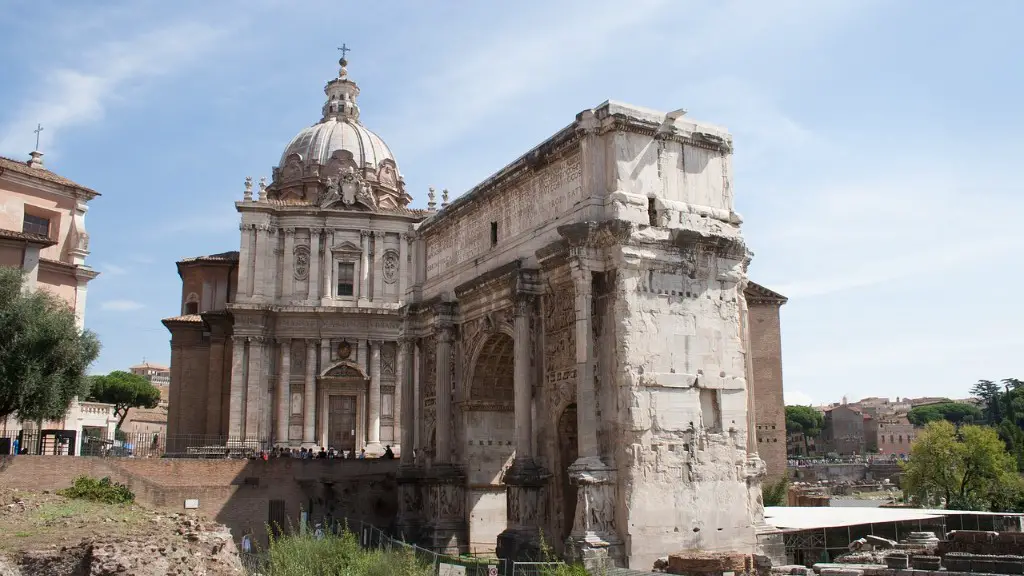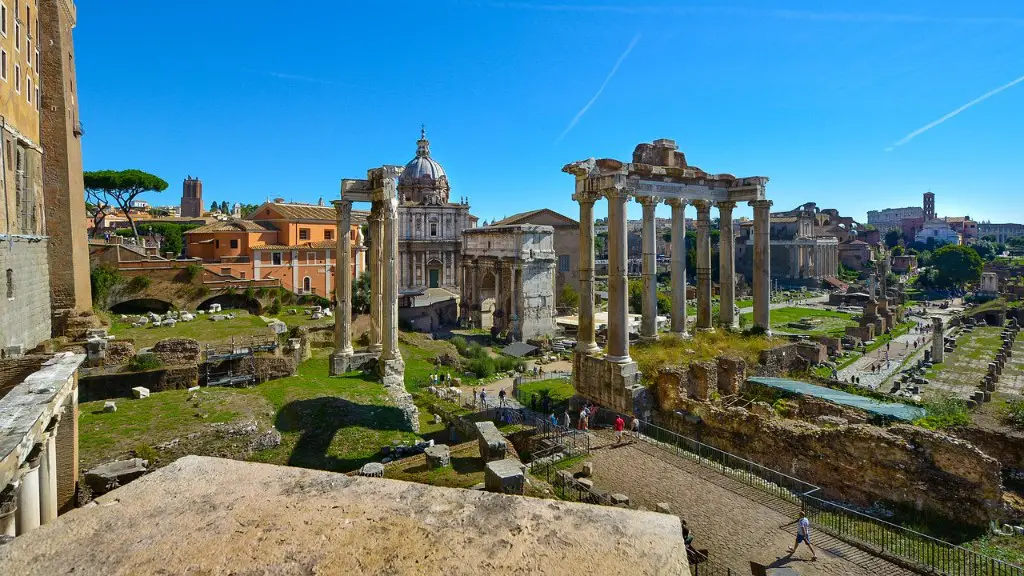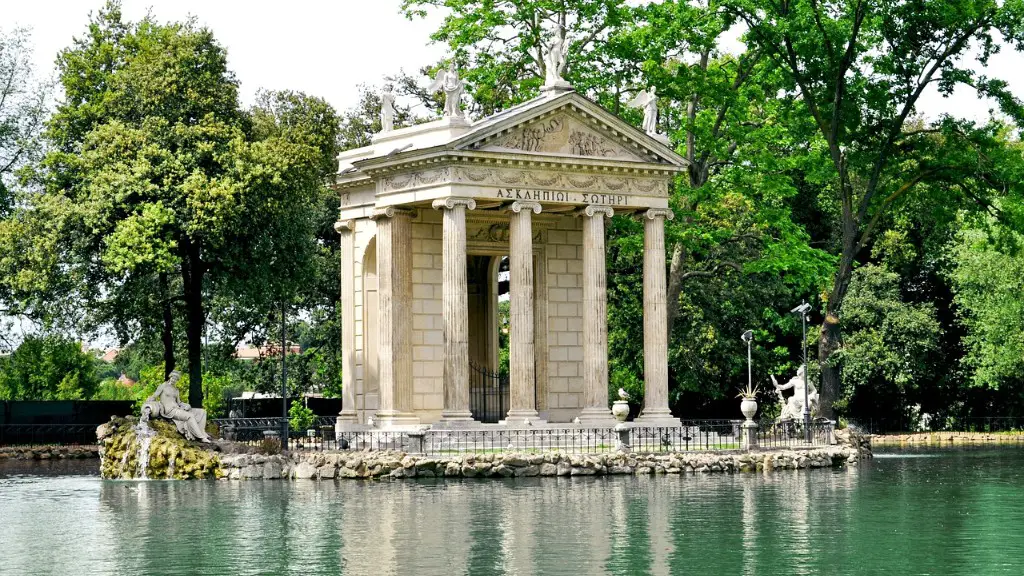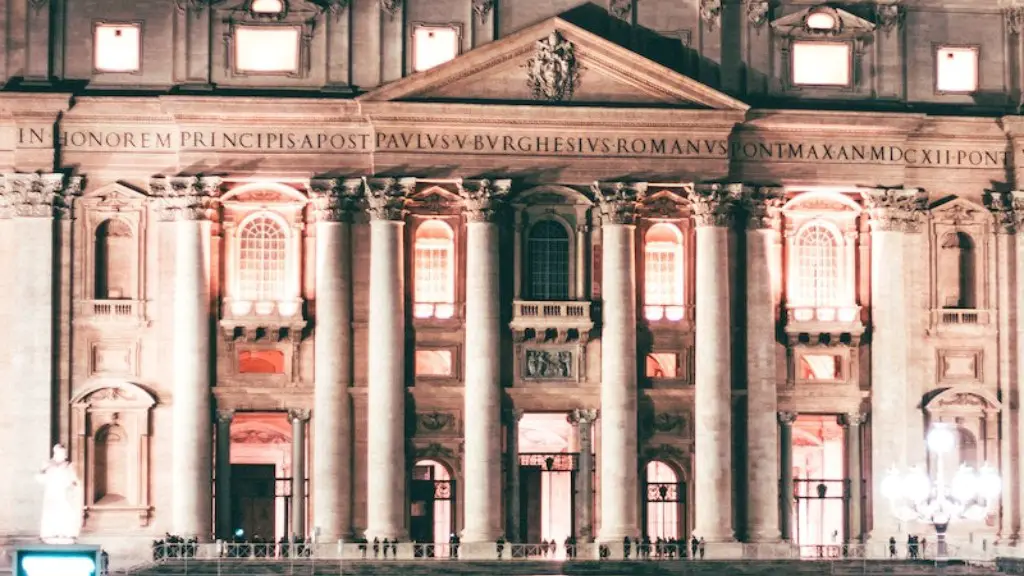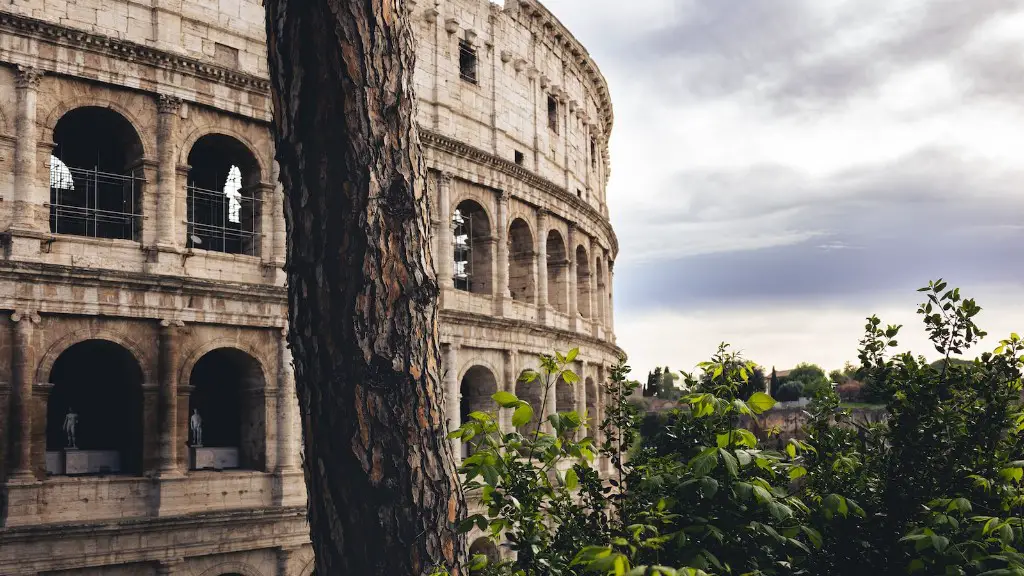Rome was a great civilization, with a system of government that evolved over centuries and formed the foundations of later systems of government. The political system of ancient Rome was based on the Roman Senate, which went through a number of changes over the years and was eventually replaced by the Roman Empire. Although it is impossible to accurately describe the political landscape of the Roman Empire, it is possible to look at some of the key features that shaped it.
At the heart of the Roman political system was the Roman Senate, which was made up of around 600 Patricians and Plebeians, who were appointed by Rome’s leading families. The Senate was responsible for making laws, managing the government and deciding who would serve in key military or governmental positions. The Senate was a powerful institution and it shaped the political environment of the Roman Empire for centuries.
In addition to the Roman Senate, the Roman people also had a number of other institutions that shaped the political system. The Roman assembly was a major political body, responsible for electing magistrates, making laws and determining foreign policy. The assembly was divided into two parts: the Comitia Centuriata and the Comitia Tributa.
The Comitia Centuriata was made up of wealthy citizens, while the Comitia Tributa was made up of ordinary members of the Roman public. The Roman people also had the right to elect their own leaders, known as Consuls.
The Roman Empire was also ruled by an emperor, who had absolute power and could veto any decision of the Senate or the people. The emperor also had the power to pass laws and appoint people to various offices. The emperor’s power was absolute, but he was also expected to follow the laws of the Senate.
Roman Military System
The Roman military system was one of the most powerful and effective in the ancient world. The Roman army was renowned for its discipline and efficiency, and it was one of the main factors behind Rome’s success in conquering its enemies. The Roman army was divided into legions, with each legion consisting of around 5,000 to 6,000 men. Each legion was commanded by an officer known as a legatus, and the legion had its own dedicated camp. The legion was also divided into smaller divisions, which had their own commanders and equipment.
Overall, the Roman military system was extremely effective and efficient, and it was one of the key reasons why Rome was able to expand and conquer its enemies. The Roman army was a major force in the ancient world, and it was one of the factors behind Rome’s success.
Roman Legal System
The Roman legal system was a complex and sophisticated affair, which was based on the 12 Tables of Roman law. The 12 Tables were a set of laws that were created in 449 BC, and which provided a basic legal code for the Roman Republic. These laws had a profound impact on the Roman legal system, and they influenced the legal codes of other nations as well.
The Roman legal system was based on the principle of ‘natural justice’, which meant that people had the right to a fair trial and to be treated fairly. The system also provided protection for citizens, as well as various rights and privileges, such as the right to pursue marriage and make wills. The Roman legal system was highly advanced, and it had a major impact on the development of law in other countries.
Religions Followed in Rome
Religion was another important part of Roman life, and it was closely intertwined with the political system. The official religion of the Roman Empire was the worship of the Roman gods and goddesses, particularly the gods Jupiter, Juno and Minerva. The official religion of the empire was strict and it was enforced by the state. Roman citizens could also practice other religions, such as Judaism and Christianity, but they had to be careful not to offend the gods of the state.
Religious practice in the Roman Empire was very complex and it changed over time. Religion was often used as a way to legitimize the rule of the emperor, and it also provided a common ground among the people of the empire. Religion was also a way to help unify the empire, and it was something that helped to forge a sense of identity and unity among the people.
Social Hierarchy in Ancient Rome
The social hierarchy in ancient Rome was based on several factors, such as wealth, status and family. At the top of the social hierarchy were the Patricians, who were wealthy and were generally members of the ruling class. Below them were the Plebeians, who were people from lower socio-economic classes. The Plebeians were divided into a number of social classes, based on factors such as wealth and status.
The Roman social hierarchy was a very important part of Roman life, as it shaped the political and economic structures of the Roman Empire. This hierarchy ensured that certain classes of people had more power and influence than others, and it ensured that the Roman Empire remained mostly stable. This system was also integral to the functioning of the Roman government, as it ensured that certain classes of people had the power to influence decisions.
Economic System of Ancient Rome
The economic system of ancient Rome was based on an agrarian economy that was supplemented by extensive trade. Rome had a large and productive agricultural sector, and this was supplemented by extensive trade with other countries. Rome was not a major industrial power, but it was able to produce a variety of goods and services, including food, clothing and luxury items.
The Roman economy was largely based on agriculture and trade, with the Roman Empire controlling a large portion of the known world at the time. Rome was a major exporter of food and other goods, as well as a major importer of luxury goods. Rome also had a number of banking and financial institutions, as well as a number of guilds that regulated trade.
Political Culture of Ancient Rome
The political culture of ancient Rome was heavily influenced by the values and traditions of the Roman people. Rome was a fiercely proud and patriotic nation, and this was reflected in the political system. The people of Rome had a deep sense of civic duty and responsibility, and this was evident in their politics and society. Rome was also a fiercely hierarchical society, with the Patricians forming the elite class and the Plebeians forming a lower class. The Roman people also had a deep sense of justice and fairness, which was reflected in the laws and codes they followed.
The political culture of Rome was also heavily influenced by religion, as the state religion was closely intertwined with politics and law. Religion also played an important role in the way the Roman people viewed other cultures and religions, as it provided a sense of unity and solidarity.
Conclusion of Ancient Rome
The political system of ancient Rome was a complex and changing system, but it was one of the major forces that shaped the Roman Empire. The Roman system was based on the Roman Senate, the Roman assembly, the Roman army, and the emperor. Other important features of the Roman political system included the Roman legal system, the Roman religion and the Roman social hierarchy. The economy of the Roman Empire was largely agrarian, with extensive trading with other nations, and the political culture of Rome was heavily influenced by values and traditions.
